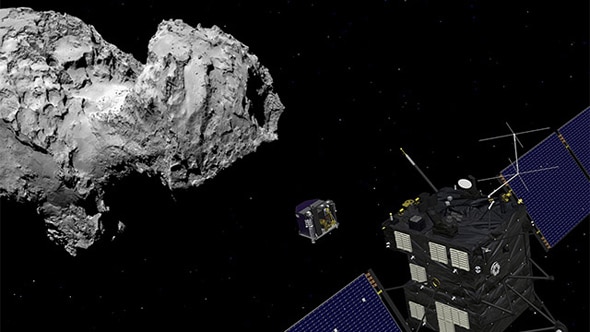Create a free profile to get unlimited access to exclusive videos, sweepstakes, and more!
BA Video: Close-Up on a Comet

In the 1980s, humanity got its first face-to-face view of a comet when a fleet of spacecraft was sent to visit Comet Halley, which was making its first pass into the inner solar system since 1910. We got never-before-seen close-up glimpses of the nucleus of a comet, the inner solid part that creates the gigantic gas cloud and long, beautiful tail.
Over the years more probes were sent to comets like Tempel 1, Hartley 2, and Wild 2. Each is an individual, and each is weird. But all of those missions were flybys—important but brief.
But now we have the Rosetta spacecraft orbiting the comet 67P/Chuyurmov-Gerasimenko, studying it in detail and over a great length of time. We’ve learned so much about it, but also opened up a Pandora’s box of even deeper mysteries about comets in general, and this comet in particular.
The big one, in my mind, is why it and so many others are shaped like bowling pins: two separate lobes connected by a relatively thin neck of material. We still don’t know when it comes to 67P, but in this week’s Bad Astronomy Video I go over the evidence we have so far.
The Rosetta mission has a nominal lifespan of a year, following 67P as it nears the Sun and becomes more active. There’s a huge amount left to learn, but a corresponding amount we’ll also discover. And that’s one of my favorite facts about science: It’s a jigsaw puzzle with an infinite number of pieces, so the fun of exploration never ends.
For more information about comets, read my article 10 Things You Don’t Know About Comets.


























